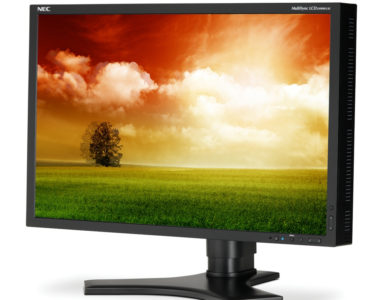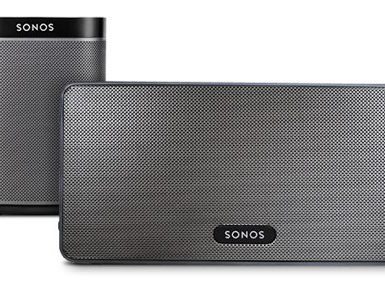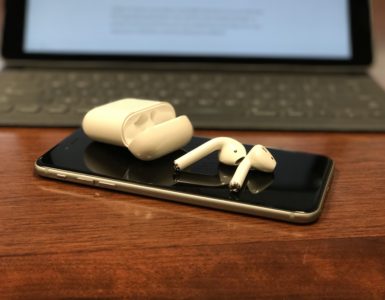We’ve been curious about Clear’s 4G service for more than a year. We’ve also been looking for a fast mobile connectivity option for use around town.
So when Clear ran a special this week on the iSpot (their 4G mobile hotspot exclusively for iOS devices), we took the plunge. Here’s our Day 1 experience in the Atlanta market, featuring everything from unboxing photos to speed comparisons with the AT&T 3G network.
?The Deal
We bought the iSpot outright for a one-time hardware charge of $29.00. We also signed up for an “all you can eat” 4G service rate of $25.00 a month — with no contract obligation. (As a result, if we decide we won’t be using the service for a while, we can “hibernate” our account and pay nothing.)
On the phone, the Clear rep offered us a similar deal on the Clear Spot 4G+ (hardware for $59.00, service for $25.00 a month) that would have given us access to a 3G network when Clear’s 4G was unavailable.
Unfortunately, the Clear Spot 4G+ also comes with a 2-year contract requirement. After looking at our travel patterns, we decided we wouldn’t be in 3G-only coverage often enough to justify taking on a 2-year contract.
If you’ve shopped mobile wireless hotspot solutions — like the 3G solutions from Sprint — you know what an amazing value a $25.00 per month unlimited connection with no contract obligation is!
Limitations — and an Unexpected Boon
The iSpot is for Apple’s iOS devices only: the iPhone, the iPod touch, and the iPad. Laptops (even Apple laptops) and other computers can’t connect to the iSpot.
The iSpot works exclusively with Clear’s 4G WiMax network. If you don’t have Clear 4G coverage in the city where you are, it’s not the solution for you.
The iSpot creates a fast, stable WiFi bubble that up to 8 iOS devices can share. (To sign on, you have to know the network name and password.)
One nice touch: even if 4G isn’t present, the WiFi network is. While you won’t be able to get to the Internet without 4G access, you will be able to play games or use apps that allow the iPhone and the iPad to communicate when logged onto the same WiFi network (like Scrabble, for example, which can use iPhones for the tile rack and the iPad for a board).
Unboxing
The iSpot comes in a sleek, simple box:
When you open it, you’ll see just the iSpot in a cardboard cradle. It’s a nice minimalist presentation, obviously designed to appeal to customers who are used to Apple’s aesthetics:
Along with the iSpot, you’ll find a well-written quick start guide, a USB-to-mini USB cable (which can charge the device), a flat rechargeable battery that slips inside the iSpot, and an AC power adapter. The adapter’s prongs — the two metal bits you plug into the wall — are attached to a piece of moulded black plastic that can be snapped off, making the adapter easier to store flat and carry with you:
We also used the iSpot with a generic cigarette lighter-to-mini USB cable that we once used with an old GPS unit; it worked like a charm.
The Unit
The unit itself is a shell of white plastic with smooth edges, almost exactly the size (and a hair thicker) of Apple’s Magic Mouse. (If you don’t have a Magic Mouse handy, it’s also about the size of a bar of Safeguard deodorant soap after about four or five days of use.)
Indicators are simple: one slot on the top of the device features a blue LED indicator (when the WiFi is on) and a tri-color indicator (which glows red, yellow, or green) to indicate signal strength (weak, medium, or strong, respectively). When searching for the network, the signal strength indicator blinks red.
A recessed power button on the front edge powers the iSpot up and down, and a little plastic cap (connected by two thin plastic tabs) covers the mini-USB port. Speaking of this port — there’s a small, but slightly annoying design flaw here: the plastic tabs don’t allow the cap to be pulled very far away from the body of the device. As a result, it’s easy for the cap to interfere with the insertion of an adaptor’s mini-USB connector.
A label on back provides the iSpot’s default WiFi password.
Setup
Setup was fast and easy — absolutely plug and play.
I powered up the device, and, in seconds, the WiFi indicator glowed blue and the signal strength indicator … blinked red, indicating no signal. But when I moved the device onto a window sill, it switched to solid red, indicating a stable, but weak, network connection.
(The Clear website indicates we live in a fringe area, so this wasn’t exactly a surprise.)
I whipped out my iPhone, chose the iSpot’s WiFi network, and entered the default password. When I fired up Mobile Safari, the iSpot captured the browser, displaying a sign-in screen that was, nicely, already filled in with my account details. Completing the one-time registration and activation of the device took less than five seconds. When I connected my iPad to the network, I was able to launch Safari and start browsing immediately.
The device can be custom-configured by pointing your browser to http://iSpot and entering an administration password. From there, you can change the network name, the password, and all the other settings you might normally fiddle with when administering a wireless router.
You can also use this screen to adjust the size of the iSpot’s wireless bubble, setting it to small, medium, or large. A large bubble, in theory, will provide coverage up to 150 feet from the unit; a smaller bubble sacrifices range for longer battery life.
Performance Around Town
Here in our condo in Midtown Atlanta — surrounded by concrete, steel, and glass skyscrapers — we didn’t expect much. (We have WiFi anyway, so in-home use isn’t a scenario that matters much to us.) There are even spots in our condo where we can’t reliably maintain a cellular connection on our AT&T-based iPhones, so I really thought the iSpot would be useless in our building.
As it turns out, the iSpot does work here in our house — though it really, really, really likes to be on a window sill. Inside our condo, the speed indicator stays red … but the service is available. Oddly, the signal is stronger in the windowless hallway!
Out and about, we fared better. All along Piedmont Avenue — along the Park, past Ainsley Mall — down to Cheshire Bridge Road, and all the way to Lenox Mall, we had either green or yellow signal strength with very few, very brief interruptions.
During the first few minutes of our drive, I pulled email, visited several blogs, and even played one of the last episodes of LOST on the ABC TV streaming app. All of these worked flawlessly, and the picture quality on the ABC app — which scales itself to the quality of the available connection — was sharp and clear.
I started out with the iSpot on our dash, but it worked equally well nestled more safely in the cup holder in our console.
At Lunch
We had lunch in a dim Asian restaurant on Lenox Road — a concrete building with storefront windows only. While we had reception near the windowed entrance, the iSpot couldn’t get a signal at our table in the back.
On the Interstate and In an Office
On I-75 North, we had good coverage apart from one stretch of highway near Moores Mill Road, where signal strength dropped to zero. But on Howell Mill Road, service came back, as strong as ever.
The big surprise of the day came when we took the iSpot into an office building, where we had an appointment deep in the central core of a windowless tower. Even in an interior office, we had a weak but very serviceable signal. I left the unit with Clyde and walked down a hall to an adjacent office — and was amazed that, even with the iSpot’s WiFi bubble set to its smallest range, I was still receiving a strong, clear signal.
While I was gone, Clyde downloaded the SpeedTest.net app. After running the test multiple times, he averaged the results — and compared the speed of the iSpot to the speed of AT&T’s 3G connection:
– iSpot 4G: 2456 kbps down / 462 kbps up
– AT&T 3G: 1341 kbps down / 1257 kbps up
Back in the car, as we drove back down I-75, I ran the same app at several points and got this average performance for our trip home:
– iSpot 4G: 2566 kbps down / 833 kbps up
– AT&T 3G: 201 kbps down / 854 kbps up
It’s pretty amazing that in a moving car, our iSpot was delivering more than 10 times the speed of our AT&T 3G connection.
Upstream, the difference in performance is nowhere near as dramatic. In the office, the 3G upstream was three time faster than the iSpot’s 4G; in the car, upstream performance was almost identical.
Numbers aside: the iSpot’s 4G connection feels very, very fast, especially if you’re used to the iPhone’s 3G performance. Videos look great; downloads fly. It’s wonderful.
Battery Life
We set our device to the smallest WiFi bubble size and ran it nearly continuously for more than three and a half hours with two iPhones and an iPad sharing its 4G connection. Even then, the battery wasn’t exhausted — we just got home and stopped using the device.
Verdict
I carried a MacBook Pro with me everywhere I went for more than three years, from coffee shops in Atlanta to hotel lobbies in Siem Reap, Cambodia.
After buying an iPad, I noticed I would sometime go weeks without touching my laptop … so I sold it to my nephew, and haven’t missed it. Clyde noticed the same pattern in his computer use … and sold his Windows laptop just this week.
So now, while we still have great desktop machines at home, both Clyde and I use iOS devices (we each have an iPhone and an iPad of our own) exclusively when on the go. And since we live in a city with plenty of 4G coverage (and tend to travel to cities where Clear has a presence) the iOS is absolutely perfect for us.
The iSpot delivers a bubble of dependable WiFi that feels zippy on all our devices. The unit is small, lightweight, and easy to stuff in my messenger bag … and battery life is quite good at 3.5 hours or more.
The device is obviously not for everyone … but if your mobile device mix and travel patterns are like ours, I think you’ll be really happy with your iSpot. I know I am!









Clear has now decided to kill the iSpot after only five months on the market.
http://blog.broadbandadvisoryservices.com/?p=1789